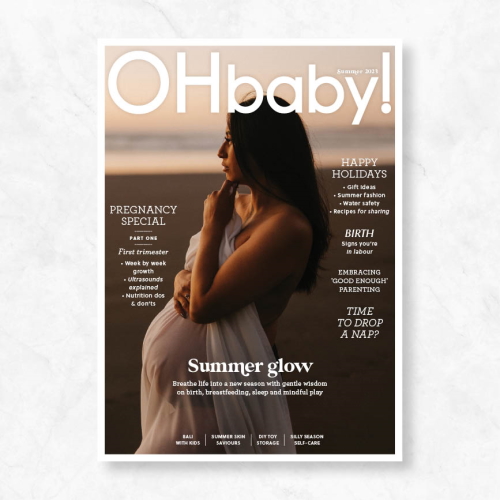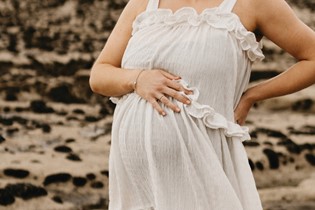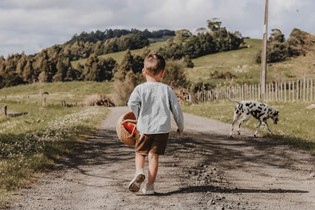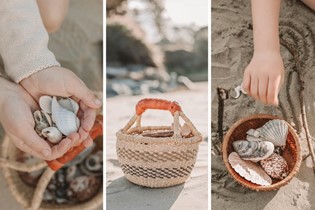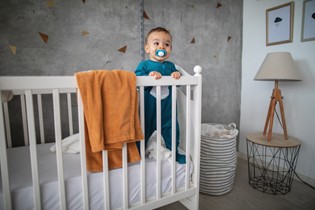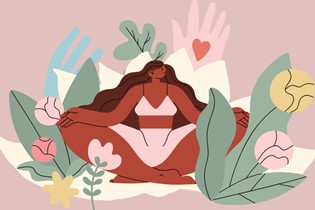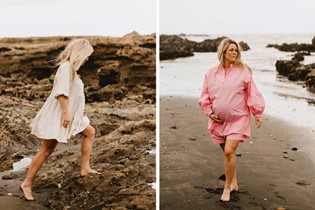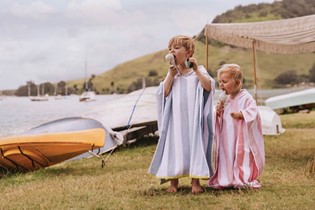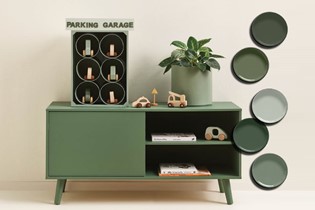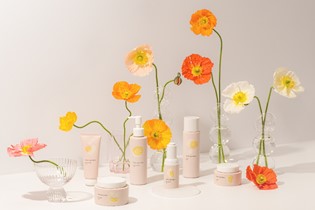Here's how to help your little ones be more calm and happy

Mindfulness expert and co-founder of Pause Breathe Smile, Natasha Rix, shares how to help your toddlers and preschoolers to be more calm and happy in the year ahead.
Raising small children can be stressful on the best of days. Add to that the toll the pandemic and the current state of the world has taken on all of us, the demands of work, unsettled babies and toddler tantrums and it can be hard to stay relaxed. It is difficult for children too, who can experience anxiety and stress from a young age. Their stress levels are something that we are worried about: a Southern Cross Healthy Futures report found that 63% of New Zealand parents are concerned how their children will cope with the pressures of life.
Mindfulness is one way to minimise our children's stresses and strains. It is a technique to help them to stay in the moment and it can be cultivated with short and simple practises and exercises. It doesn’t have to take a lot of time in the day or add to your already lengthy to-do list; rather mindfulness can be integrated into your daily routine with your kids. For a grown up, a mindfulness exercise might be about focussing on feeling the sunshine on your back and your feet on the ground while hanging the washing on the line, or having one cup of tea a day where you put down your phone and look out the window, take a few deep breaths and notice how you are feeling in that moment. For children, mindfulness practises are much like play, but are designed to connect your little ones to how they are feeling in their bodies and to increase their calmness. By doing mindfulness together, everyone can feel more peaceful and the moments of calm eventually stack up to create a more mindful life for the whole family.
THE MINDFULNESS JOURNEY
When I became a mum, I was already on my own mindfulness journey, having spent years training in the practise and teaching it to others. By the time my daughter was three, I was part of a community of mums who were anxious about the way they parented. In online forums and in-person coffee groups, they’d talk about being stressed that they weren’t doing it ‘right’. I launched Mindful Mums to help them to let go of their anxiety, feel calmer, and be less critical. Ten years on, I run Pause Breathe Smile, an organisation which teaches mind health to children all over Aotearoa. Our programme is taught in primary schools and it’s free for all children because Southern Cross funds it, and it’s making a huge difference in Kiwi kids’ lives.
HOW TO GET STARTED
You can start mindfulness with your children well before they start primary school. It doesn’t matter how tidy the house is or how much time you have, because mindfulness can happen anywhere and any time. Keep it simple.
In general, it’s best to try these exercises when the children are calm, rather than in the midst of a meltdown, but one or two of our exercises can be used to diffuse a tantrum as well. Your children will be your guide and let you know if an exercise is too complicated for them, so try one or two and just give it a go. There are lots of mindfulness resources available online too, if you need more support.

EXERCISES TO TRY
#1 Breathing Buddies
When we take deep, mindful breaths into our belly, we stimulate the Vagus nerve, which is a key part of our body’s self-calming system. To activate this in your toddler or preschooler, try Breathing Buddies. Lie down on your back with your child next to you. Put a soft toy on each of your bellies and start to breathe slowly and deeply. Make it a game – how far can teddy rise up and drop down each time you take a breath? After a few minutes, take note of how you both feel and how much calmer your little one is.
#2 Scavenger Hunt
Feeling connected to nature is associated with better mental health and lower depression and anxiety levels in both adults and children, so take a walk in nature. Turn it into a mindfulness exercise by making a scavenger hunt with a list of things to find – leaves, birds, trees, shells. When you identify something on the list, stop and talk about it. How does it look? Does it make a noise? Can your child touch it and describe how it feels? Notice each footstep you take. Engage, slow down and enjoy a walk that is not about exercise, but about being together outside. You can practise mindful walking anywhere, including your own garden or a nearby park – it doesn’t have to involve a long car trip or a whole day out.
#3 Mind Jar
Making a Mind Jar is a fun crafts activity and creates a tool to practise mindfulness with. Together with your child, fill a jar with water, glitter glue and glitter in different colours (you can Google step-by-step instructions) and then seal your jar with a watertight lid. Talk with your little one about how each glittery colour is a worry they have. Name the worries. Shake up the jar and watch as the worries mix together, making it hard to focus on any one worry. Practise mindful breathing as you both watch the glitter settle at the bottom of the jar. Make the connection with your child between the breathing and the settling of the worries. This can work really well at bedtime to help your child calm down and go to sleep.
#4 Mindful Eating
Mindful eating is a simple way to bring mindfulness into your daily routine, because you’ve got to eat! You can practise it at mealtimes or with a cracker or a piece of apple in between meals. Here’s how it works: ask your child what the food looks like, smells and feels like. Ask them if they can hear anything as they munch. How does the food taste? By slowing down their eating and getting your children to tune into each of their senses as they eat, it can help them to enjoy food more, feel more satisfied and to be in the moment. This is a good one for children three and older.
#5 Name it and Tame it
Talking about feelings is something you can start with toddlers. We refer to it as ‘Name it so we can tame it’ as it helps to teach them to regulate their emotions. The weather is a great place to start. Ask them, are they feeling sunny or cloudy? Are there storm clouds on the horizon? If there are, can you blow them away together? For slightly older children, encourage them to name the emotion directly. Assure them that it’s okay to feel that way. Do some mindful breathing and see if that helps their negative feelings to pass. This can be a good exercise to do together when your child is getting upset or annoyed, before it becomes completely overwhelming for them.
#6 Guided Mindfullness
Finally, a lot of young children have difficulty sleeping. To help them to relax at bedtime, listen to a guided mindfulness practise created specially for children (download a few from our website or use a mindfulness app). Do it at the same time as your child if at all possible, lying next to them, as that will help them to settle and concentrate and tune in to the recording.
FINAL THOUGHTS
A little mindfulness integrated into your day will help your children to build self-awareness, and relate positively to others as well as help you to connect with them. Once they get to school, they’ll have a good understanding of acting mindfully. The primary school children we work with are more focussed at school, more resilient when life is tricky, and kinder to themselves and their friends once they have learnt Pause Breathe Smile. Our research shows that integrating mindfulness into their day increases positive behaviour in the classroom by 12.4% and reduces negative behaviour by 10.1%. Mindful kids learn better, are more helpful and less apprehensive. That’s the magic of mindfulness.
Natasha Rix is the co-founder of 'Pause Breathe Smile' and a mum. To find out more about or to download mindfulness recordings, visit pausebreathesmile.nz.
If you would like your children’s school to teach 'Pause Breathe Smile', share it with your children’s teachers – they can train for free, thanks to the support of Southern Cross.

AS FEATURED IN ISSUE 64 OF OHbaby! MAGAZINE. CHECK OUT OTHER ARTICLES IN THIS ISSUE BELOW
